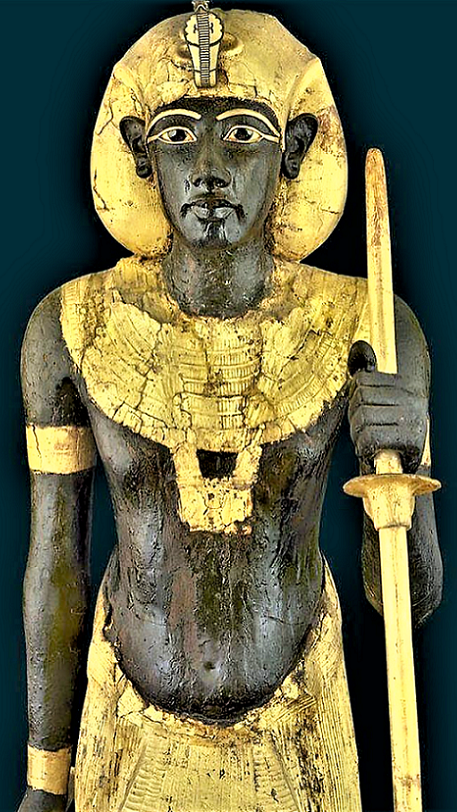Introduction
In January 1924, a groundbreaking moment in archaeology was captured within the tomb of Sethos II, designated as KV 15. This colorized photograph features archaeologists Arthur Mace (standing) and Alfred Lucas (sitting) diligently working in a makeshift ‘laboratory’ on the conservation of two sentinel statues from the Antechamber (Carter no. 22). One of these statues prominently depicts the young King Tutankhamun, adorned with the iconic nemes headdress, a kilt, and sandals, while holding a mace and a staff, symbolizing his royal authority.
The Discovery of King Tutankhamun’s Tomb
The discovery of King Tutankhamun’s tomb, located in the Valley of the Kings, occurred just two years prior, in November 1922. This monumental excavation was led by British archaeologist Howard Carter, whose team unearthed a remarkably well-preserved tomb filled with a wealth of artifacts. This discovery offered unprecedented insights into ancient Egyptian funerary practices and royal life, showcasing the opulence and intricacies of the 18th Dynasty.

Significance of the Tomb
King Tutankhamun’s tomb is particularly noteworthy not only for its rich contents but also for its historical context. Tutankhamun ascended to the throne at a young age, and his reign was marked by significant changes in religion and governance. The artifacts recovered from his tomb have allowed historians to piece together aspects of ancient Egyptian culture, politics, and society.
The Conservation Efforts
The subsequent work conducted by Mace and Lucas in this makeshift laboratory was crucial in ensuring the preservation of these invaluable treasures. Their meticulous care in handling the artifacts exemplifies the dedication and expertise required in archaeological conservation. This work not only protected the artifacts but also ensured that future generations could appreciate the grandeur of ancient Egyptian civilization.

A Glimpse into Ancient Egyptian Civilization
This remarkable colorized photograph captures the essence of the archaeologists’ dedication, shedding light on the artistry and opulence of a bygone era. The sentinel statues, representing the protection and legacy of the young king, provide insight into the craftsmanship and artistic achievements of ancient Egyptian artisans.
Ongoing Impact and Legacy
Today, the treasures uncovered from Tutankhamun’s tomb are celebrated worldwide, with many pieces housed in the Egyptian Museum in Cairo. The ongoing study of these artifacts continues to yield profound insights into the cultural, political, and social aspects of ancient Egyptian society during the 18th Dynasty. The legacy of Tutankhamun captivates audiences globally, ensuring that the story of ancient Egypt remains vibrant and engaging.

Conclusion
This colorized image not only commemorates a pivotal moment in archaeology but also serves as a powerful reminder of the enduring legacy of ancient Egypt. The continuous journey of discovery into its rich history highlights the significance of preserving our past while enriching our understanding of humanity’s cultural heritage.

